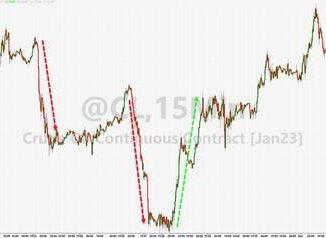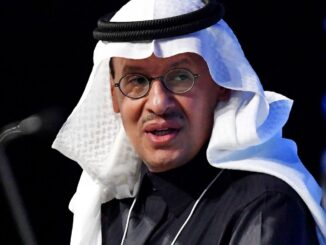
Global oil markets were experiencing unprecedented volatility in March and April 2020, with spot U.S. crude oil trading between $47 and negative $37 a barrel. By May the world was beginning to absorb the economic shutdown. It became clear that the drop in oil demand would endure for more than a few weeks.
That month several energy ministers approached Energy Secretary Dan Brouillette with a stunning offer: They wanted the U.S. to start regularly coordinating energy supply with the Organization of the Petroleum Exporting Countries. It was an offer to join in the Declaration of Cooperation—the pact that created OPEC+, a powerful cartel that includes the original OPEC member countries and 10 other states.
The ministers’ offer was an acknowledgment that the old days, in which the U.S. was beholden to OPEC, were over. It was explicit confirmation that the Trump administration’s efforts to achieve energy dominance had worked. As the world’s top crude producer and leading developer of exploration and production technology, America had effectively become the world’s swing oil producer. It set global energy prices with its free-market approach and unconventional production capabilities.
While the U.S. declined the offer, it’s worth recalling how America went from being the world’s largest importer of energy in the early 2000s to arriving at net energy exporter status in 2019. The shift happened for three reasons: U.S. energy-technology innovation, policies that favored increased energy supply, and large investment by private markets.
Conventional U.S. oil production had been slowly dropping for decades as fields depleted and costs increased. Starting in the early 2000s, the technology breakthroughs of three-dimensional seismic imaging, horizontal drilling and hydraulic fracturing allowed producers to extract vast amounts of shale oil at very low prices. The U.S., through its national labs and the private sector, also developed other technologies that led to a renewable-energy revolution.
Washington began to adopt policies that supported energy development, such as tax incentives for wind and solar and streamlined permitting for natural-gas pipelines and exports. Two key changes had a dramatic effect on oil. The first was the Energy Policy Act of 2005, which allowed states to develop their own policies for drilling rather than having to look to the Environmental Protection Agency for approval. The second was the lifting of the oil-export ban in the 2016 budget agreement, which the Republican-controlled Congress received in exchange for extended wind and solar credits.
Clear support from Washington provided confidence to investors, which resulted in a large inflow of private capital for drilling and infrastructure. The annual capital investment in North American exploration and production increased to a peak of $300 billion in 2014 from $10 billion in 2003, allowing the new energy prospects to become reality.
The combination of innovation, sound energy policies and investment led to an increase in U.S. oil production to 12.9 million barrels a day in 2019, from a low of 4.9 million in 2007. The U.S. became the largest producer of oil in the world and the third-largest oil exporter, leading to energy-price deflation in the U.S.
This dramatic turn in energy posture not only created significant economic growth and energy security for the U.S., it produced a completely new foreign-policy playing field. No longer could one country use its natural resources as a political weapon. No longer could a cartel control the economic destiny of the U.S.
Before OPEC made its offer to the U.S., the Trump administration had begun to flex America’s status as an energy superpower. Mr. Brouillette engaged in aggressive energy diplomacy with OPEC+ and non-OPEC nations, as well as with energy companies around the world. Proof of American energy leadership came in April 2020, when, after ensuring that oil-producing countries noticed plummeting demand and were adjusting to the near-term market issues, President Trump announced the historic new OPEC+ agreement that adjusted for Covid. Recall that deal had OPEC—and its allies, including Russia and Mexico—agree to cut production by 9.7 million barrels a day.
That moment of peak energy dominance was the culmination of many factors: American innovation, an all-the-above, pro-supply set of policies, markets willing to invest and strong, knowledgeable energy diplomacy. As we confront the challenges in energy markets today, we’d do well to remember the ingredients that made us so successful not so long ago.
Mr. Dabbar served as undersecretary of energy for science, 2017-21.



